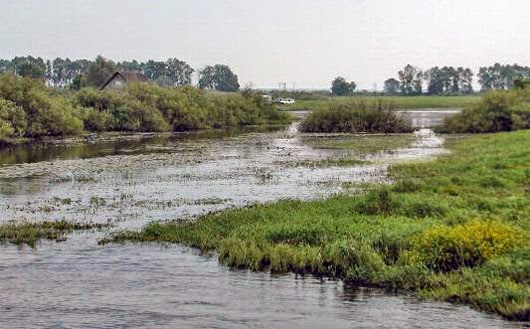Materials
- 2-3mm MDF/hardboard base
- Semi-rigid/rigid clear plastic
- Brown, black, tan, green acrylic paints
- Black spray primer
- X-acto knife or Utility knife
- Permanent Marker
- CA glue and/or construction adhesive
- White glue
- Drill with bit larger than sabre saw blade
- Sanding paper
- Sabre saw and/or Dremel multi-tool
- Clear casting resin OR Acrylic gloss medium
- Fake fur fabric (I used Vicuna)
- Flocking and/or static grass
- Clump foliage
2. Once cut, draw several irregular shapes inside the bases. These will later form the areas of open water. To cut them out, use a drill with a bit slightly larger than your sabre saw and drill a hole anywhere on the edge of your drawn shapes. Insert the sabre saw in this hole and cut the hole out. If your saw is on an angle, make sure the angle slopes inward (see pics for reference).
3. Sand down the beveled edges to give the base a gentle slope on the edges to aid figure placement. I like using the sanding band on my Dremel, but you can also using a palm sander or just basic sandpaper.
Once sanded, flip the bases over and glue sheets of rigid or semi-rigid clear plastic to the bottom. I used clear plastic 8.5" x 11" page dividers and construction adhesive to save money. Make sure no glue is exposed under the water holes. Allow to dry. Once dry, cut off any excess from the outside of the base with a sharp blade.
4. Now to add the illusion of depth to the water holes! With the bases still flipped upside down, take the darkest color you'll be using on the top of the base itself. I used a dark brown acrylic craft paint called "Melted Chocolate"; mixed with a little grey it makes an excellent wet mud color. Using a sponge or brush, paint around the edges of the water holes. Don't go too far out. Allow to dry.
5. Keep adding successively darker colored rings to the water holes. I just kept adding more and more black to the first brown-grey color. Allow to thoroughly dry. Once completely dry, spray the entire base bottom with black spray primer. Apply a few coats to really seal in the paint and protect it from damage.
Using the same color from Step 54 flip the base rightside up and paint the bases, being careful to avoid the water holes. It should look like the water holes get deeper towards the middle, giving the illusion of more depth than is really there. (Yes, I know the first coat inside my water holes is lighter than the base color - I accidentally mixed the base color incorrectly. So be sure to mix your paint correctly!)
6. Mix your clear casting resin according to manufacturer's direction, being sure to work in an adequately ventilated area while wearing disposable gloves. Depending on the brand, you should be able to mix in tinted colors to give the water a murky appearance. Browns and greens work well. I used a green tint color which doesn't show up in the pictures. Whatever colors you decide to use keep in mind that, contrary to popular belief, healthy wetlands usually have fairly clean (though somewhat murky) water. Dank, stagnant mud pits are rare and usually a sign of environmental stresses or pollution. Place the bases on a clean, level surface and fill the water holes about halfway with the resin. Allow to cure for 24 hours.
If you do not want to use resin, you can use acrylic gloss medium in several shallow layers. Be sure to allow each layer to thoroughly dry.
7. Cut large irregular shapes from the fake fur fabric to represent areas of tall, dry grass. Have a vacuum cleaner close at hand - this is the messiest part of the build - fur gets everywhere, especially if it's low quality. Before gluing, place the fabric on the bases to make sure it fits correctly. You don't want to cover the entire base or have the edges hanging off the base or into the holes. Glue down and allow to dry. (I used wood glue here, the resin helps to polyester backing adhere better to base)
8. Once the fabric drys, remove any excess "fur", apply a thin layer of white glue around the base (again, being sure to avoid the water holes), and apply flocking. Allow to thoroughly dry.
9. Shake off the excess flocking. Apply a thin layer of white glue over the flocking, concentrating on areas around the tall grass and water holes. Apply static grass. Wait a few minutes, shake off the excess, then apply a little more static grass over the areas you've already applied the glue to. This 'fills in' any voids on spots and makes the grass look denser than it really is. Allow to thoroughly dry.
10. Apply small clusters of clump foliage around the base. I use this as an opportunity to hide any areas where paint or fabric didn't get adequate flocking or static grass coverage. Allow to dry.
Here it is all finished - at a fraction of the cost of ready-made swamps and more realistic as well. Though, I've built and pictured these marshes with 15mm WW2 miniatures, they can easily be used with 20mm and 28mm miniatures in nearly every time period and place. If you want to make these marshes solely for use with larger-scale miniatures, I'd suggest buying two lengths of fake fur fabric - using on to represent areas of high grass and the other for areas of lower grass.
Enjoy!












No comments:
Post a Comment